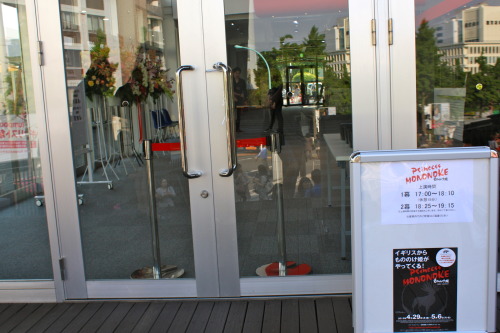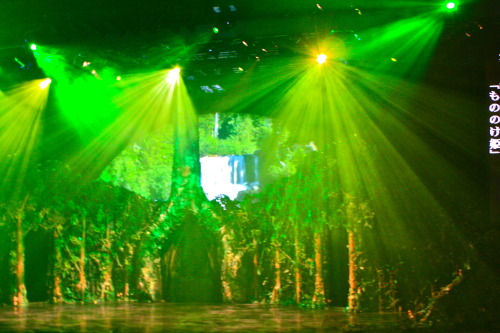After weeks of pent-up excitement, I had the pleasure of watching Whole Hog Theater, a London theater troupe, perform their stage adaptation of Hayao Miyazaki’s Shinto-inspired fantasy epic this afternoon: Princess Mononoke.
True to the film, the play had a distinctively ethereal atmosphere throughout, as displayed by the stage alone. However the acting was also top-notch, the costumes were delightfully accurate and the elaborate puppetry pushed the boundaries well beyond what I thought was possible in performance theater.
The leads, Prince Ashitaka and Princess Mononoke, were particularly strong, mirroring both the personalities and even the inflections of the characters I had grown up admiring from the English dubbed version of the film.
According to a recent article published in Japan Times, they had apparently rehearsed for a very long time to reach this desired effect. Since they retained most of the original dialogue, it’s easy to imagine the Prince and Princess mouthing along with the film repeatedly to match the voice actors’ delivery.
When Prince Ashitaka yelled “San!” as he attempted to rescue her from the accursed jaws of Lord Okoto, I found his voice to be nearly indistinguishable from Billy Crudup’s. Also the chemistry between Ashitaka and San was equally infectious, during both their transitional dance segments and their dialogue; I found myself bawling uncontrollably when San motioned to cut his throat for fully joining neither the the forest’s nor Lady Eboshi’s cause, to which he softly interjected, “You’re beautiful.”
Before coming to the show, I had wondered what the troupe’s costume directors would choose to keep and what to ignore from the film in terms of clothing. I was pleased to notice that the majority of the costumes, like Ashitaka’s iconic hood and straw coat, were kept intact.
San looked absolutely striking in her savage, tribal mask and ermine white fur coat, which appeared to be authentic. Considering the cast’s humble size, I was also very impressed by the speed at which they were able to change from Emishi villager garb to samurai armor to Irontown worker tunics, etc.
Unfortunately, I couldn’t take pictures during the show, but you can take my word for it that the puppets were anything but underwhelming, as I had feared.
They made me feel what it would be like to undergo a mix of awe and fear in the presence of enormous beasts like Moro, the mother of the wolf gods for example, who bellowed her hatred for humans while other puppeteers snarled beneath her to create a bone-chilling effect.
All their movements were so convincing that I often forgot I was watching giant paper-machete puppets rather than living, breathing animals.
Overall, it was a show I will never forget and I feel tremendously lucky to have had the opportunity to see it. Since it’s only playing in Tokyo and London this spring, it seems that I was meant to see my favorite anime on-stage.
It’s amazing to me that eleven years ago, I watched the film for the first time and also started eating sushi, which both spurred my growing interest in Japanese culture as a child, and now here I am seeing it performed live (in English too, no less) while I’m studying abroad in Tokyo.
Sometimes, life really is a funny thing.
Today, it’s not “funny-sad” though, as it tends to be in the midst of work and stress and school, but rather I guess you could say it’s “funny-glad,” for lack of better phrasing.



